Consultancies undertaken by LAGA and LAGA personnel
LAGA takes a flexible approach in providing consultancy services. In some cases, consultancy services are provided directly, with LAGA acting as administrator for the overall project. This option functions best when a team of LAGA specialists is required for a project. Where appropriate, especially in cases where an individual has been contracted to conduct an assessment or prepare a substantive report, LAGA also serves as a platform that allows its specialists to be contracted directly as individuals. This approach allows for the individual consultant to seek and receive the advice of other members of the overall LAGA team.

Enhancing climate mitigation and adaptive capacity through sustainable forest management in South Africa
South Africa’s share of global GHGs from coal-based power generation is nearly double that of GDP. The government highly prioritises both boosting power generation and reducing GHG emissions through better quality coal power stations but mainly by transitioning to renewables. Forests will play a critical role while renewables capacity falls short of covering still high CO2 discharge by coal-based power stations.
The objective of the project is threefold: (i) to contain the costs of achieving net carbon neutrality through sequestration of an estimated 40% of CO2 emissions load by forests, woodlands and trees; (ii) to develop carbon trade arrangements between the forestry and power sectors; and (iii) to strengthen the resilience of local communities in project intervention areas through enhanced forest and woodland ecosystem services, ecosystem-based adaptation and increased livelihood opportunities. The proposed project consists of four components:
The total budget of the project is $10,000,000 with $8,000,000 from the Green Climate Fund and $2,000,000 in co-financing. The consultancy was financed by the Global Forest Financing Facilitation Network (GFFFN) of the UN Forum on Forests.

Strengthening national forest management for adapting to and mitigating climate change in Dominica, Saint Kitts and Nevis, and Saint Lucia
Small island developing states (SIDS) in the Caribbean are particularly vulnerable to impacts of climate change such as sea-level rise and extreme weather events in the form of hurricanes and droughts, causing severe social, economic and environmental disruptions. The two-fold objective of this multi-country project is (a) to ensure the sustainable management of forest ecosystems in Dominica, Saint Kitts and Nevis, and Saint Lucia for climate change adaptation and mitigation and (b) to strengthen the resilience of the livelihoods of their populations and the ecosystems they depend upon through strategic adaptation measures.
The project has the following eight specific objectives: i. Improve environmental, social and economic information and knowledge on climate change impacts for decision making, planning and management. ii. Develop the countries’ satellite Earth Observation (EO) capacities related to forest monitoring. iii. Reduce CO2 emissions from deforestation and forest degradation through improved information and knowledge on forest ecosystems, their sustainable management and utilization, and enhanced protection. iv. Design and implement an operational mechanism for valuing products and services from forest ecosystems in order to provide an incentive for sustainable management of these ecosystems benefiting local populations (including women, youth and other vulnerable groups), thereby contributing to climate change mitigation and adaptation. v. Strengthen sustainable forest governance and management through the development of more effective forest policies contributing to climate change mitigation and adaptation, the establishment of stronger sustainable forest management measures, including spatial vulnerability assessments and a system for payment of forest ecosystem services (PFES), and supportive legislation, that engage a wide range of stakeholders. vi. Within the framework of the spatial vulnerability assessments to be designed, develop supportive measures for adapting to climate change. vii. Strengthen the institutional capacity of forestry departments in the three countries in sustainable forest management and in addressing more effectively the role of forests in mitigating and adapting to the threats and risks of climate change. viii. Support the implementation of each country’s REDD+ Strategy through the provision of critical, strategic elements to be developed in the project’s five components:The total budget of the project is $15,332,375 with $13,999,125 from the Green Climate Fund and $1,333,250 in co-financing. The consultancy was financed by the Global Forest Financing Facilitation Network (GFFFN) of the UN Forum on Forests. The Concept Note and Prefeasibility Study for this proposed project were turned over to UNEP who as the Accredited Entity is considering revising the former for formal presentation to the GCF.

Forests and land use in adapting to climate change impacts and increasing the resilience of the livelihoods of peoples, communities and the ecosystems they depend upon in Dominica
Dominica is highly vulnerable to climate change impacts, particularly the increase in number and intensity of extreme weather events, decreased rainfall, rising air temperatures, increased drought, sea level rise and warming sea temperatures. The two-fold objective of this national project is (a) to ensure the sustainable management of forest ecosystems in Dominica for climate change adaptation and mitigation and (b) to strengthen the resilience of the livelihoods of Dominica’s populations and the ecosystems they depend upon through strategic adaptation measures. The project has six specific objectives:
i. Improve environmental, social and economic information and knowledge on climate change impacts for decision making, planning and management. ii. Strengthen sustainable forest governance and management through the development of more effective forest policies and ecosystem approaches contributing to climate change adaptation and mitigation, the establishment of stronger SFM measures, including national land use plans and enhanced management of protected areas and their buffer zones, and supportive legislation, that engage a wide range of stakeholders. iii. Provide support to the implementation of Dominica’s National Land Use Plan (NLUP), developed in 2015, and its draft National Physical Development Plan (NPDP) developed in 2016. Within the framework of these, develop supportive measures for adapting to climate change, including strategic reforestation and forest protection, as well as strategies for promoting climate change resilient agriculture. vi. Mobilize reforestation and forest restoration of degraded lands on 1,440 hectares, including 440 hectares for agroforestry, that will contribute directly to both climate change adaptation and mitigation. v. Rebuild protected areas infrastructure damaged or destroyed by Hurricane Maria in 2017. vi. Support the implementation of the country’s REDD+ Strategy through the provision of critical, strategic elements to be developed in the project’s five components.
Forests and land use in adapting to climate change impacts and increasing the resilience of the livelihoods of peoples, communities and the ecosystems they depend upon in Saint Kitts and Nevis
Climate change is already being experienced in Saint Kitts and Nevis through rising sea levels, increasing mean temperatures and changes in rainfall and weather patterns. Future projected climate changes include further sea level and temperature rise, changes in rainfall patterns leading to more torrential rainstorms but decreased overall precipitation, increase in drought and increasing intensity in extreme weather events. The future risks associated with these drivers include loss of adaptive capacity and ecosystem services critical to lives and livelihoods in small islands, in particular, further reduction in already at-risk and highly constrained fresh water resources.
The two-fold objective of this national project is (a) to ensure the sustainable management of forest ecosystems in Saint Kitts and Nevis for climate change adaptation and mitigation and (b) to strengthen the resilience of the livelihoods of the country’s populations and the ecosystems they depend upon through strategic adaptation measures. The project has six specific objectives:
i. Improve environmental, social and economic information and knowledge on climate change impacts for decision making, planning and management. ii. Strengthen sustainable forest governance and management through the development of more effective forest policies and ecosystem approaches contributing to climate change adaptation and mitigation, the establishment of stronger SFM measures, including national land use plans and enhanced management of protected areas and their buffer zones, and supportive legislation, that engage a wide range of stakeholders. iii. Mobilize reforestation and forest restoration of degraded lands on 700 hectares, including 460 hectares for agroforestry, that will contribute directly to both climate change adaptation and mitigation. iv. Increase the water catchment capacity and network infrastructure of both Saint Kitts and Nevis to reduce the impact of climate change (droughts and salinization of aquifers from sea-level rise) on freshwater resources; v. Promote and increase agricultural producttion through agroforestry and climate-resilient agriculture; vi. Support the implementation of the country’s REDD+ Strategy through the provision of critical, strategic elements to be developed in the project’s four components.
Forests and land use in adapting to climate change impacts and increasing the resilience of the livelihoods of peoples, communities and the ecosystems they depend upon in Saint Lucia
Saint Lucia is highly vulnerable to climate change impacts, particularly the increase in number and intensity of extreme weather events, decreased rainfall, rising air temperatures, increased drought, sea level rise and warming sea temperatures. The two-fold objective of this national project is (a) to ensure the sustainable management of forest ecosystems in Saint Lucia for climate change adaptation and mitigation and (b) to strengthen the resilience of the livelihoods of the country’s populations and the ecosystems they depend upon through strategic adaptation measures. The project has seven specific objectives:
i. Improve environmental, social and economic information and knowledge on climate change impacts for decision making, planning and management. ii. Strengthen sustainable forest governance and management through the development of more effective land use plans contributing to climate change adaptation and mitigation, the establishment of stronger sustainable forest management measures, and supportive legislation, that engage a wide range of stakeholders. iii. Promote forest restoration for adapting to the threats and risks of climate change and for reinforcing the resilience of the livelihoods of its inhabitants. iv. Improve Saint Lucia’s food security through the development of climate change resilient agroforestry. v. Promote the application of guidelines/strengthened building codes and selected measures for hurricane-resistant structures for forest-dependent and rural communities. vi. Increase protection of public use infrastructure in forested and rural areas. vii. Support the implementation of the country’s REDD+ Strategy through the provision of critical, strategic elements to be developed in four of the project’s six components.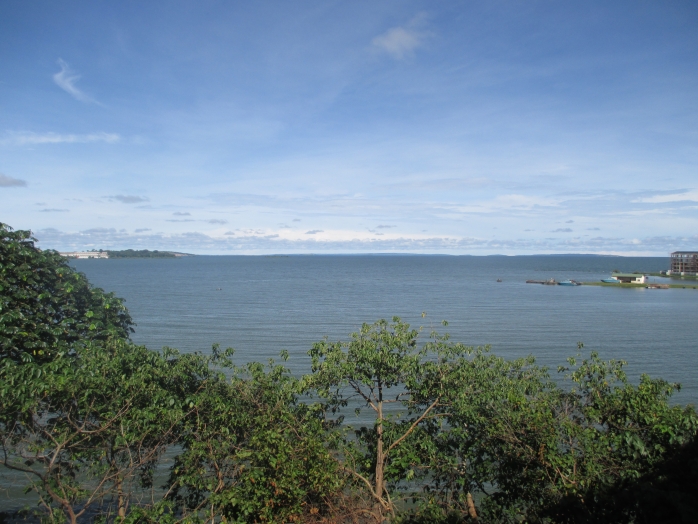
GCF Concept Note and Prefeasibility Study for project entitled “Enhanced resilience of ecosystems and communities to climate change impacts in Uganda through sustainable land management”.
Climate change in Uganda has manifested itself through increased frequency of extreme weather events and changing weather patterns that seriously threaten its natural resource base and negatively impact its social and economic development. The objective of this Project is to enhance the adaptive capacities of both ecosystems and livelihoods through sustainable forest and land use management. This will in turn contribute to reduced CO 2 emissions and increased productivity leading to the improved resilience of livelihoods for local populations. It will be achieved through large scale land and forest restoration, ecosystem based adaptation interventions, as well as strengthened governance frameworks. Implementation will be led by the Ministry of Water and Environment (MWE), supported by IUCN, in partnership with relevant government and non-government entities, local communities and stakeholders, especially women and the private sector. The project is comprised of five components:
- Forest landscape restoration in priority intervention areas,
- Design and implementation of inter-institutional coordination and cooperation mechanisms for achieving sustainable forest and land use management,
- Incentives for promoting sustainable forest management,
- Programme for Payment for Forest Environmental Services (PFES), and
- Strengthening forestry information systems and the knowledge base.
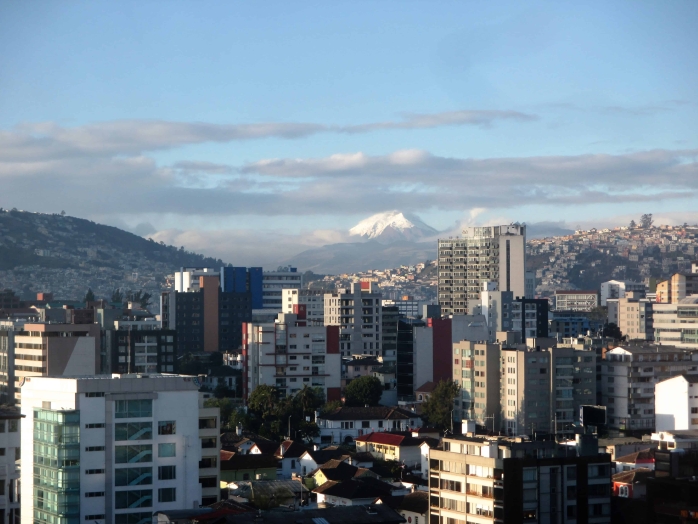
GEF Project Identification Form for project entitled “Strengthening forest management governance in Ecuador to advance the country’s “Zero Net Deforestation 2020” Initiative”.
The objective of the project was to (a) improve the management of forested lands and the conservation of associated biodiversity and (b) reduce deforestation through strengthened governance supported by technical platforms and instruments. Conservation International (CI) was the project’s GEF Implementing Agency. It was comprised of three components:
- Improving integrated forest management through the development of a deforestation strategy, supportive technical platforms and instruments,
- Demonstration projects in targeted areas of the Provinces of Esmeraldas and El Oro for demonstrating and applying the Net Zero Deforestation Strategy with supportive technical platforms, instruments and tool kits for integrating into provincial and local development plans, and
- Capacity building and replication.
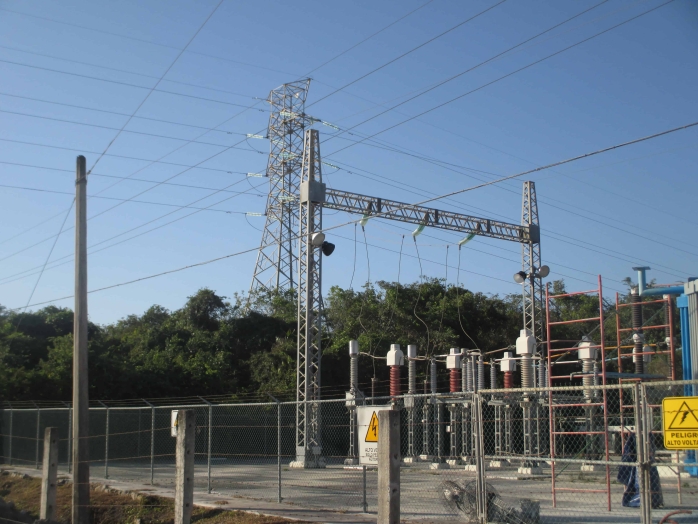
GEF Project Identification Form for project entitled “Integrating renewable energy into Mexico’s new market (Grid-Fit)”.
The objective of the project was to develop an expanded grid infrastructure for integrating the transmission and distribution of renewable energy (RE) from generators, both large and small, based on cost-effectiveness and adequate and transparent consideration of environmental and social impacts. It was to contribute to cutting an estimated 18 million metric tons of CO2 from the power sector by 2018 (15% of emissions from the power sector). With the adoption of the Energy Reform in 2013, Mexico committed itself to increase significantly the portion of electricity generated from renewable sources, primarily hydroelectric, wind and solar, while phasing down fossil fuel-based electricity generation. The Energy Reform has catalyzed the adoption of important legislation to this end, which in turn required a major transformation of the country’s energy transmission and distribution network. The effective operationalization of recent renewable energy legislation was crucial for Mexico achieving its commitments pledged at the Conference of the Parties of the 21st meeting of the United Nations Framework Convention (UNFCCC) in Paris, France. The project was comprised of five components:
- Novel public-private instruments and business models: Increased investments in large scale transmission infrastructure associated with renewable energy,
- Project and infrastructure risk mitigation,
- Implementing regulatory measures for expanding RE transmission and distribution and generation,
- Demonstration Projects for (a) testing and evaluating the effectiveness of proposed instruments and business models, (b) illustrating supportive management measures, mechanisms and tools and (c) showcasing potential transmission of RE generation capacity, and
- Capacity building and replication.
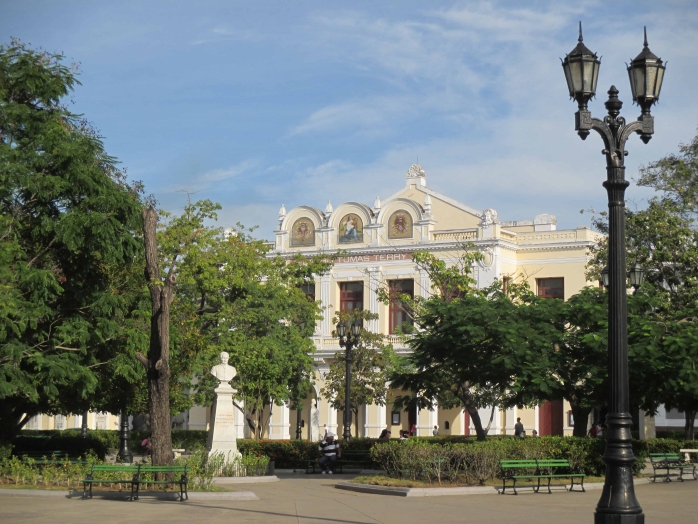
GEF full-sized project sub-project: “Assessment and monitoring of the problems that need to be addressed through integrated watershed and coastal area management (IWCAM) in the western, central and eastern regions of Cuba”.
The sub-project is part of a regional project entitled “Integrating Water, Land and Ecosystems Management in Caribbean Small Island Developing States” (GEF-IWEco Project). The overall project involving eight SIDS was funded by GEF for a total of $22,718,598. The long-term goal of the project is to contribute to improved quality of the water, land and biological resources in the Caribbean through application of appropriate solutions that maintains the flow of ecosystem benefits and their contribution to long-term socio-economic development. The two-fold objective of the project is (a) the implementation of an integrated approach to water, land and ecosystems services management, supported by policy, institutional and legislative reforms, and (2) implementation of effective, appropriate technologies to accelerate contribution to global targets on access to safe and reliable water supplies and improved sanitation, and contributing to improved ecosystem functioning in the Caribbean. The Cuba sub-project was comprised of four components:
- Development and implementation of environmental management tools for biodiversity conservation, including addressing climate change impacts,
- Assessment and monitoring of the problems that need to be addressed through integrated watershed and coastal area management (IWCAM) in the western, central and eastern regions of Cuba,
- Improvement of the institutional, legal and regulatory frameworks and capacity building for integrated watershed and coastal area management in support of biodiversity conservation in Cuba, and
- Information management and dissemination and sub-project replication.
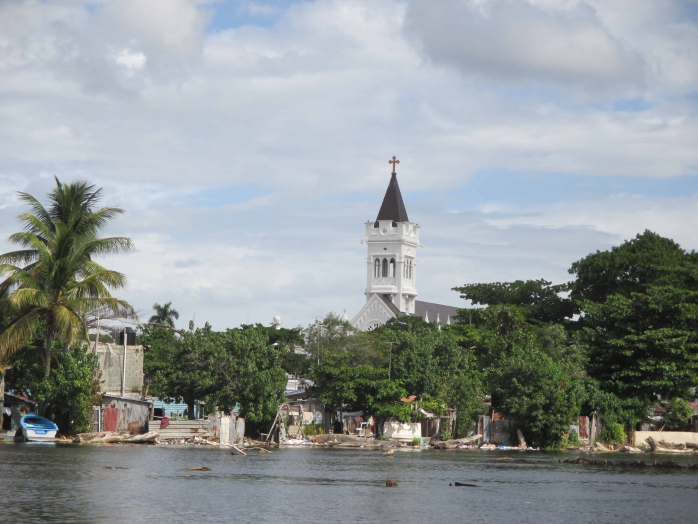
GEF full-sized project sub-project: “Developing and implementing approaches for the integrated management and maintenance of ecosystem services of the Higüamo River watershed in the Dominican Republic”.
The Dominican Republic sub-project is part of a regional project entitled “Integrating Water, Land and Ecosystems Management in Caribbean Small Island Developing States” (GEF-IWEco Project). The overall project involving eight SIDS was funded by GEF for a total of $22,718,598. The long-term goal of the project is to contribute to improved quality of the water, land and biological resources in the Caribbean through application of appropriate solutions that maintains the flow of ecosystem benefits and their contribution to long-term socio-economic development. The two-fold objective of the project is (a) the implementation of an integrated approach to water, land and ecosystems services management, supported by policy, institutional and legislative reforms, and (2) implementation of effective appropriate technologies to accelerate contribution to global targets on access to safe and reliable water supplies and improved sanitation, and contributing to improved ecosystem functioning in the Caribbean. The Dominican Republic sub-project was comprised of four components:
- Developing and implementing approaches for the integrated management and maintenance of ecosystem services of the Higüamo River watershed,
- Assessing problems and identifying priorities for improving the management of the land, water and biodiversity resources of the Higüamo River watershed and its associated coastal zone, taking into account climate change, sensitive ecosystems and ecosystem services,
- Strengthening of policies and legal and institutional frameworks and capacity building for sustainable land management, integrated management of water resources and the management of ecosystem services, taking into account climate change, and
- Sharing of project information, lessons learned and good practices, and promoting project replication.

GEF full-sized project sub-project: “Developing and implementing approaches for the integrated management and maintenance of ecosystem services of the Negril Environmental Protection Area (EPA)” in Jamaica.
The Jamaica sub-project is part of a regional project entitled “Integrating Water, Land and Ecosystems Management in Caribbean Small Island Developing States” (GEF-IWEco Project). The overall project involving eight SIDS was funded by GEF for a total of $22,718,598. The long-term goal of the project is to contribute to improved quality of the water, land and biological resources in the Caribbean through application of appropriate solutions that maintains the flow of ecosystem benefits and their contribution to long-term socio-economic development. The two-fold objective of the project is (a) the implementation of an integrated approach to water, land and ecosystems services management, supported by policy, institutional and legislative reforms, and (2) implementation of effective appropriate technologies to accelerate contribution to global targets on access to safe and reliable water supplies and improved sanitation, and contributing to improved ecosystem functioning in the Caribbean. The Jamaica sub-project was comprised of four components:
- Developing and implementing approaches for the integrated management and maintenance of ecosystem services of the Negril Environmental Protection Area (EPA),
- Assessing problems and identifying priorities for improving the management of the land, water and biodiversity resources of the Negril EPA, taking into account climate change, sensitive ecosystems and ecosystem services,
- Strengthening of policies and legal and institutional frameworks and capacity building for sustainable land management, integrated management of water resources and the management of ecosystem services, taking into account climate change, and
- Sharing of project information, lessons learned and good practices, and promoting project replication.

GEF full-sized project entitled “Mexico: Integrating tradeoffs between supply of ecosystem services (ES) and land use options into poverty alleviation efforts and development planning in the Mixteca, with UNEP as the GEF Implementing Agency.
The primary goal of the project is to conserve globally important ecosystems and species within the Mixteca region of Oaxaca, Mexico, including a large number of endemic and migratory species, through good practices in biodiversity conservation, natural resource management and agriculture. At the same time, this will contribute to improving the livelihoods of local and indigenous communities. The objective of the project is to mainstream biodiversity conservation objectives into natural resource use and development planning for sustainable livelihood options in the Oaxacan Mixteca. This includes integrating tools for assessing and valuing ecosystem services and incorporating these values into policy instruments used in decision-making by government and stakeholders. The project is comprised of five components:
- Strengthening the knowledge base on the ecosystem approach for biodiversity conservation,
- Supporting biodiversity-friendly policy and program development for land use planning and resource use,
- Piloting biodiversity friendly programs on the ground,
- Outreach and dissemination, and
- Monitoring and evaluation.

GEF PIF and Project Preparation Grant (PPG) for project entitled “Improved management of agrochemical life cycles in the Caribbean and Central American region” to be implemented in Colombia, Costa Rica, Dominican Republic, El Salvador, Honduras, Jamaica, Nicaragua and Panama, with UNEP as the GEF Implementing Agency.
This GEF PIF regional proposal was endorsed by the eight countries listed above, as well as three executing partners (UNEP as the lead executing partner, FAO and the United Nations University) and four regional cooperating agencies. Its objective was to curtail the release of agrochemicals to marine areas of the Caribbean Sea through the application of alternate land/crop/soil management practices, comprehensive management plans and other specific measures to mitigate the improper use of agrochemicals, including pesticides and nutrients in the agricultural and tourism sectors. The project was comprised of the following seven components:
- Through south-south and other regional co-operation, build national capacity to dispose of used and outdated agrochemical stocks and their containers, and monitor agrochemical residues, production and trade and strengthen the implementation/enforcement of policy and legal frameworks to this end,
- Measure impact of project on water samples of selected watersheds by monitoring and evaluating agrochemicals and nutrients: production and trade statistics, and crop residues in selected hotspot areas of project countries and instigation of effective corrective ecosystems management measures.
- Assess the impact of agrochemical residues in food and their potential impacts on human health, and formulate and implement appropriate responses (with partners that may include PAHO, WWF, FAO and/or others)
- Develop and apply innovative and clean production technologies for training farmers, through farm growers’ associations, as well as agrochemical and nutrient users in tourism and public health practitioners (with partners that may include PAHO, WWF, FAO and/or others)
- Promote positive market forces for increasing the acceptability of good agricultural practices (GAP) products by local markets as a complement to standards applied by retailers in international markets and that contribute to food security efforts in the region
- Develop and apply regional and national strategies for replicating project results and disseminating lessons learned, and
- Monitoring and evaluation.
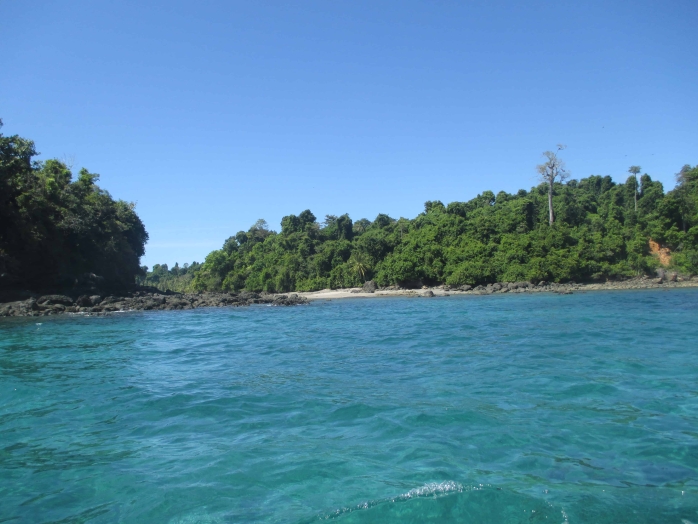
Integrated coastal management and sustainable management of mangrove ecosystems in Guatemala, Honduras and Nicaragua.
The objective of the project was to promote integrated coastal management along the Caribbean coast of Guatemala, Honduras and Nicaragua, with special emphasis on the conservation and sustainable development of mangrove forests. The project was promoted by the Government of Spain in response to the vulnerability of this region to the devastating impact of hurricanes such as Hurricane Mitch. Mangroves are a critical first line of defense for these countries against extreme weather events. Using the UNEP format for project design, the project was divided into two phases: Phase 1:
- The preparation of diagnostic studies on the status of mangroves and the threats they face in the three countries;
- The preparation of operational plans for achieving integrated coastal management (ICM) and sustainable management of mangroves (SMM) in Guatemala, Honduras and Nicaragua.
- The preparation of supportive pre-investment projects and their presentation to donors. The Government of Spain provided $7,927,498 for this project, which was implemented by UNEP’s Regional Office for Latin America and the Caribbean (ROLAC).
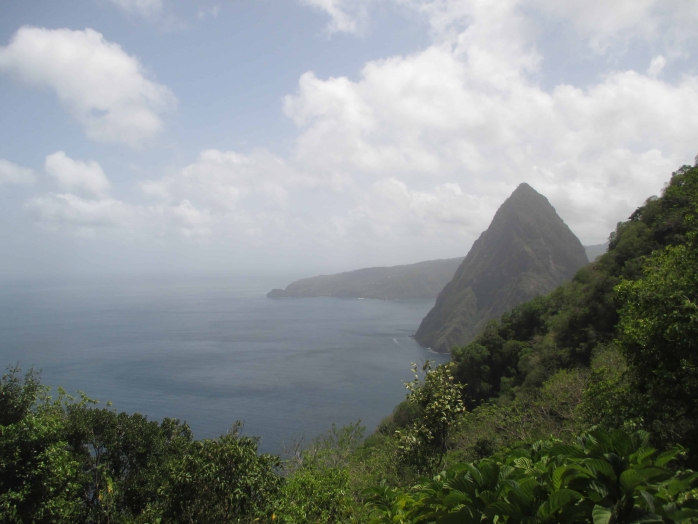
Reducing GHG emissions from forests and land use and increasing the resilience of the livelihoods of peoples and communities and the ecosystems they depend upon in Dominica, St. Kitts and Nevis, and St. Lucia.

Pre-GEF Project Identification Form concept paper for the proposed project entitled “A Multi- and Cross-Sectoral Approach to Addressing Global Environmental Threats in Mexico”.
The concept paper was well-received in principle by the GEF Secretariat. The proposed project was to be implemented by the Mexican Government and key partners, and aimed to generate significant global environmental benefits through a cross-sectoral strategy that built on the GEF Focal Areas in Climate Change, Biodiversity, Land Degradation, International Waters and Persistent Organic Pollutants; as well as the Facility’s cross-cutting areas on Sustainable Forest Management and Sound Chemicals Management. Total funding being negotiated, including with the private sector, was estimated at US$750 million. In the end, the Mexican Government decided to develop a series of complementary projects. The consultancy was paid by WWF Mexico.
Substantive documents, technical papers and assessment reports
LAGA experts have prepared a number of substantive documents on a wide range of environmental issues for international inter-governmental and non-governmental organizations, as well as for a university in the U.S. and the private sector, including:
The Global Forest Goals Report 2021: Realizing the importance of forests in a changing world presents an overview of progress achieved thus far in the implementation of the United Nations
Strategic Plan for Forests 2017-2030 and its six Global Forest Goals and twenty-six associated targets, based on available national and global data. These goals and targets fully encompass and build on the solid foundation of the four Global Objectives on Forests of the United Nations Forest Instrument (UNFI) and are aligned with the Sustainable Development Goals (SDGs) of the 2030 Agenda for Sustainable Development. The report highlights where actions are being taken, and where gaps and challenges remain. It also includes a set of success stories that showcase best practices in sustainable forest management. The report was launched on 26 April 2021 at the sixteenth session of the United Nations Forum on Forests (UNFF). full document LAGA’s President, Dr. Jorge Illueca, was one of three consultants contracted to work with the drafting team of the UNFF Secretariat in the Department of Economic and Social Affairs of the United Nations (UNDESA) in the preparation of this UNFF flagship publication.
Forest Financing Strategy for the Commonwealth of Dominica, the Federation of Saint Cristopher and Nevis, and Saint Lucia, to be presented in 2022 to the Validation Workshop on the Project Concept Notes for Dominica, Saint Kitts and Nevis, and Saint Lucia.
Full document coming soon
Two documents presented to the 19th session of the Convention on Biological Diversity’s (CBD’s) Subsidiary Body on Scientific, Technical and Technological Advice (SBSTTA) of 2-5 November 2015:
Background document on the contributions of the Collaborative Partnership on Forest’s member organizations to the achievement of the forest-related Aichi Biodiversity Targets and the implementation of the Expanded Programme of Work on Forest Biodiversity full document Note by the Executive Secretary: Forest biodiversity: role of international organizations in supporting achievement of the Aichi Biodiversity Targets full document
“Independent Assessment of the International Arrangement on Forests”, presented to the Second meeting of the Open-ended Intergovernmental Ad Hoc Expert Group on the International Arrangement on Forests in January 2015 and the 11th session of the UNFF in May 2015
full document LAGA’s President, Dr. Jorge Illueca, was selected as the Latin American expert on the five-member team that prepared the Independent Assessment of the International Arrangement on Forests. The other members were from Africa, Asia and the Pacific, Western Europe and Others, and Eastern Europe.
Capacity-building workshop paper entitled “Strengthening national reporting in support of the implementation of the forest instrument” and to facilitate with FAO five regional capacity-building workshops in Bangkok, Nairobi, Accra, Beirut and Santiago on strengthening implementation and reporting on progress in the implementation of the Forest Instrument (UNFI) and its four global objectives on forests.
A case study of ecosystem-based management of the freshwater resources of the Panama Canal Watershed, which was included in a UNEP publication on ecosystem-based management of freshwater resources entitled Water Security and Ecosystem Services: The Critical Connection (March 2009)
Prepared the following documents for the 8th session of the UN Forum on Forests in May 2009:
Report of the UN Secretary-General on forests and climate change full document Report of the UN Secretary-General on reversing the loss of forest cover, preventing forest degradation in all types of forests and combatting desertification, including low forest cover countries full document Note by the Secretariat: Forests in a changing environment: low forest cover countries, small island developing states and high and medium forest cover countries full document
